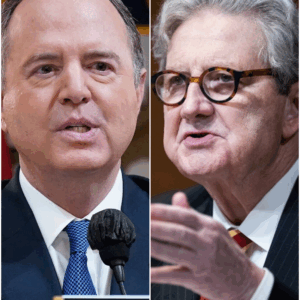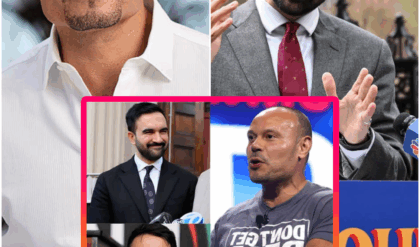“Leaked Plans, Framed Timelines, and a Viral Whodunit”: Inside the Explosive Claims Around Charlie Kirk, Erika, and the Shadow Over UVU
Editor’s note: The following article summarizes allegations circulating online and commentary attributed to Candace Owens and other unnamed sources. Many claims described here have not been independently verified. Treat them as allegations, not established fact.
In the span of a few feverish news cycles, a sprawling online narrative has taken shape around the late conservative activist Charlie Kirk—one that places his widow Erika, an acquaintance named Tyler Robinson, and a still-unnamed “Operator” at the center of an elaborate scheme. The story, amplified by Candace Owens through monologues, interviews, and purported “leaks,” blends surveillance footage, reconstructed timelines, and claims of tampered records into a plotline that feels part political thriller, part true-crime mystery.
What’s certain is small. What’s alleged is vast. And between those two poles, millions of viewers are trying to connect the dots.
The Bombshell That Lit the Fuse
Owens’ latest volley framed Erika—once widely perceived as above suspicion—as a potential architect in a months-long orchestration that allegedly tracked Kirk’s movements and subtly rerouted his days. The materials Owens references include unreleased video fragments, documents (schedules, maps, correspondence), and body-language analyses of conversations Erika is said to have had with unidentified individuals. In Owens’ telling, these pieces align too neatly to be random: a story of intent, patience, and planning.
Critics counter that the presentation leans heavily on inference—glances, pauses, and logistics interpreted through a predetermined lens. Defenders argue that while each item can be dismissed in isolation, the pattern is what matters.
The Surveillance Thread
Central to the narrative are claims that Kirk’s movements—days, even weeks—were quietly documented by someone with inside access. Video snippets allegedly show him entering locations unaware, his schedule mirrored by a second set of eyes. The implication: a watcher who knew his daybook nearly as well as he did. Owens suggests that watcher was part of a larger design.
One recurring name in these materials is Tyler Robinson. He appears not as an overt antagonist but as a figure whose whereabouts and actions happen to intersect with key timeline beats. Sometimes he’s a frame in a wider shot; other times he is an annotation in a log. Owens stresses that the coincidences pile up past comfort—even if they fall short of direct proof.

Enter “The Operator”
As Owens’ version of the story expands, so does the cast. Investigators (in these accounts) begin to suspect an unseen planner—nicknamed “the Operator”—who stays a step ahead. False leads appear in the right inboxes at the right moments. Tips arrive that nudge police and public toward a convenient suspect. The Operator’s calling card, according to this theory, is meticulous timing and a forensic understanding of both human psychology and investigative workflow.
It’s a compelling trope—the antagonist you never see, only feel. But again, the claim remains a claim.
The UVU Detour and a “Perfect” Patsy
A separate thread—tethered to the same universe of allegations—relates to an incident at UVU and the public rush to tie it to Tyler Robinson, described as a quiet fisherman pulled into a whirlwind. In this telling, a photograph of a weapon surfaces, forensics point in his direction, and local media paint a tidy suspect profile. Then cracks show: an alibi backed by receipts, time-stamped photos, and corroborating witnesses; lab variances suggesting planted biological traces; digital records that look back-dated.
A fictional-sounding but named investigator, Detective Laura Emerson, allegedly spots the pattern. Emails. Social posts. Tampered administrative logs. Each breadcrumb points somewhere, but never to the same place. The cumulative effect suggests orchestration rather than coincidence—an elaborate framing that makes a wrong suspect look plausibly guilty while the true actor disappears into the apparatus.
Whether Emerson, as quoted, exists exactly as described outside these online accounts is unclear. The broader point, for those persuaded by the narrative, is how easily metadata, bureaucracy, and virality can be weaponized.
Documents in the Shadows
The most technical slice of Owens’ framing involves document forensics: maintenance logs, course schedules, and internal emails from UVU allegedly edited after the fact to align with a predetermined storyline. A cited analyst, Dr. Henry Lau, is said to identify irregular timestamps and edits inconsistent with standard recordkeeping. If real—and verified—such tampering would be explosive. If not, it’s another instance of internet myth-making wearing a lab coat.
Here, the story’s gravity depends on authentication. Who held the source files? Who verified chain of custody? Who compared server logs to document histories? Without hard answers, these remain accusations with rhetorical weight but limited evidentiary standing.
Erika at the Center—Or at the Edge?
Owens’ characterization of Erika is calibrated: not cartoonishly villainous, but disciplined, confident, a person who projects control and anticipates responses. Body-language experts, she says, read this as the poise of a coordinator. Skeptics call that soft science. Supporters counter that in ultra-managed environments, nonverbal signals are sometimes all that survives the shredder.
A particularly debated clip purportedly shows Erika in measured conversations with unidentified figures. No incriminating phrases—only guarded tone, clipped delivery, and an impression of authority. Is that coordination—or simply a competent person navigating a difficult moment? The internet split won’t resolve soon.
The Pattern vs. the Proof
Owens’ core argument is gestalt: small anomalies, piled high, start to look like a plan. Routes altered, meetings shifted, phones that ping one tower too many. Anonymous tips that point away from power and toward the convenient. Friends who become conduits without realizing it. In this framework, even Tyler’s most mundane movements gain narrative meaning.
But there is a difference—legally, ethically—between a pattern that feels orchestrated and proof that satisfies investigators, courts, or the public beyond a tight online circle. Right now, the conversation lives in that uncomfortable gap.
Public Reaction: A Country of Armchair Analysts
Reaction has been instantaneous and polarized. Some readers demand accountability and fresh investigations. Others warn against trial-by-timeline and the lure of confirmation bias. College groups host watch parties, slowing videos frame-by-frame. Reddit spins up megathreads. TikTok feeds the dopamine with 30-second “explainer” slices that rarely include caveats.
At the same time, those closest to the story (in these accounts) describe a human cost: harassment, suspicion, and the grinding anxiety of being name-checked by strangers who think they’ve solved a case because a caption told them so.
What Would Move This Beyond Allegation?
If the claims are to leap from viral theory to verifiable truth, several things would have to happen:
-
Primary-source authentication of documents and video (with chain of custody).
Independent forensic review of alleged tampering—servers, logs, devices—not summaries about it.
On-the-record responses from named institutions and individuals, with evidence attached.
Transparent timelines that reconcile digital artifacts with physical-world corroboration.
Until then, the narrative remains powerful but provisional.
The Only Safe Conclusion (For Now)
The online case against Erika—and the exonerating counternarrative for Tyler Robinson—rests on a lattice of leaks, interpretations, and asserted expertises. Parts may be true. Parts may be misread. Parts may be deliberately planted. What is undeniable is the story’s gravitational pull: it speaks to a national mood primed to distrust official narratives and to believe that the most important moves occur off camera, in the quiet edit of a database or the unnoticed detour of a daily schedule.
Candace Owens’ investigation has forced many to re-examine assumptions and to ask better questions about chain-of-evidence, institutional transparency, and the ease with which digital trails can be forged or bent. But compelling does not mean conclusive, and virality is not verification.
Until independent, public, and rigorous confirmation surfaces, the fairest summation is the hardest one to hold: we don’t know. And in a world racing to say otherwise, restraint is its own kind of courage.
News
The auditorium glitched into silence the moment Joel Osteen leaned toward the mic and delivered a line no pastor is supposed to say in public. Even the stage lights seemed to hesitate as his voice echoed out: “God will NEVER forgive you.” People froze mid-applause. Kid Rock’s head snapped up. And in that weird, suspended moment, the crowd realized something had just detonated off-script.
The crowd expected an inspiring evening of testimony, music, and conversation. What they got instead was one of the most explosive on-stage confrontations ever witnessed inside a church auditorium. It happened fast—36 seconds, to be exact.But those 36 seconds would…
The room stalled mid-breath the moment Mike Johnson snapped open a black folder that wasn’t on any official docket. Cameras zoomed. Staffers froze. The label on the cover — CLINTON: THE SERVER SAGA — hit like a siren. Johnson leaned toward the mic, voice sharpened enough to scratch glass, and read a line that made every timeline jolt: “Her email is criminal.”
Here’s the thing about made-for-TV government: it knows exactly when to hold a beat. Tuesday’s oversight hearing had the rhythm down cold—routine questioning, polite skirmishes, staffers passing notes like we’re all pretending this is not a stage. And then Mike…
🔥 “THE FLOOR SHOOK BEFORE ANYONE COULD SPEAK.” — Investigator Dane Bonaro didn’t walk into the chamber — he tore through it, slamming a blood-red binder onto the desk with a force that made the microphones hiss. The label on the cover froze the room mid-breath: “1.4 MILLION SHADOW BALLOTS.” He locked eyes with the council and snarled, “You want the truth? Start with this.” For one suspended second, every camera operator lifted their lens like they’d just smelled a political explosion.
Here’s a scene you’ve watched a hundred times if you’ve spent enough hours in hearing rooms and greenrooms: a witness with a flair for performance, a committee hungry for a moment, and a gallery of reporters quietly betting which line…
🔥 “THE SMILE FLICKERED—AND THE ENTIRE STUDIO FELT IT.” — Laura Jarrett walked onto the Saturday TODAY set with the kind of calm, polished glow producers dream of. Cameras glided, lights warmed, and the energy felt like a coronation. But right as she settled between Peter Alexander and Joe Fryer, something shifted — a tiny hesitation in her smile, the kind that makes everyone watching sit up a little straighter. And then it came: a voice from outside the studio, sharp enough to snap the broadcast in half. For a full second, no one moved.
Here’s the thing about TV milestones: they’re designed for easy applause. A new co-anchor takes the desk, the chyron beams, the studio lights do their soft-shoe, and everyone is on their best behavior. It’s a ritual as old as morning-show…
🔥 “THE ROOM STOPPED LIKE SOMEONE CUT THE OXYGEN.” — What’s racing across timelines right now isn’t framed as a speech, or an interview, or even a moment. It’s being told like a rupture — the instant Erika Kirk, normally armored in composure, let a single tear fall while standing beside Elon Musk. Witnesses in these viral retellings swear the tear didn’t look emotional… it looked inevitable, like something finally broke through her defenses. And when Musk turned toward her, the entire audience leaned in as if they already knew the world was about to shift.
It was billed as a calm forum on human rights—an hour for big ideas like freedom, transparency, and the obligations that come with having a public voice. The stage was washed in soft gold, the kind of lighting that flatters…
🔥 “THE ROOM WENT DEAD IN UNDER A SECOND.” — What unfolded inside the Senate chamber didn’t look like a hearing anymore — it looked like a trap snapping shut. Adam Schiff sat back with that confident half-smile, clutching a 2021 DOJ memo like it was the final move in a game he thought he’d already won. Staffers say he timed his line perfectly — “Your rhetoric ignores the facts, Senator. Time to face reality.” But instead of rattling Kennedy, something in the senator’s expression made even reporters lean forward, sensing the shift before anyone spoke again.
It didn’t look like much at first—another oversight hearing, another afternoon in a Senate chamber where the oxygen gets thinned out by procedure. Then Adam Schiff leaned into a microphone with a lawyer’s confidence, and John Neely Kennedy pulled out…
End of content
No more pages to load











